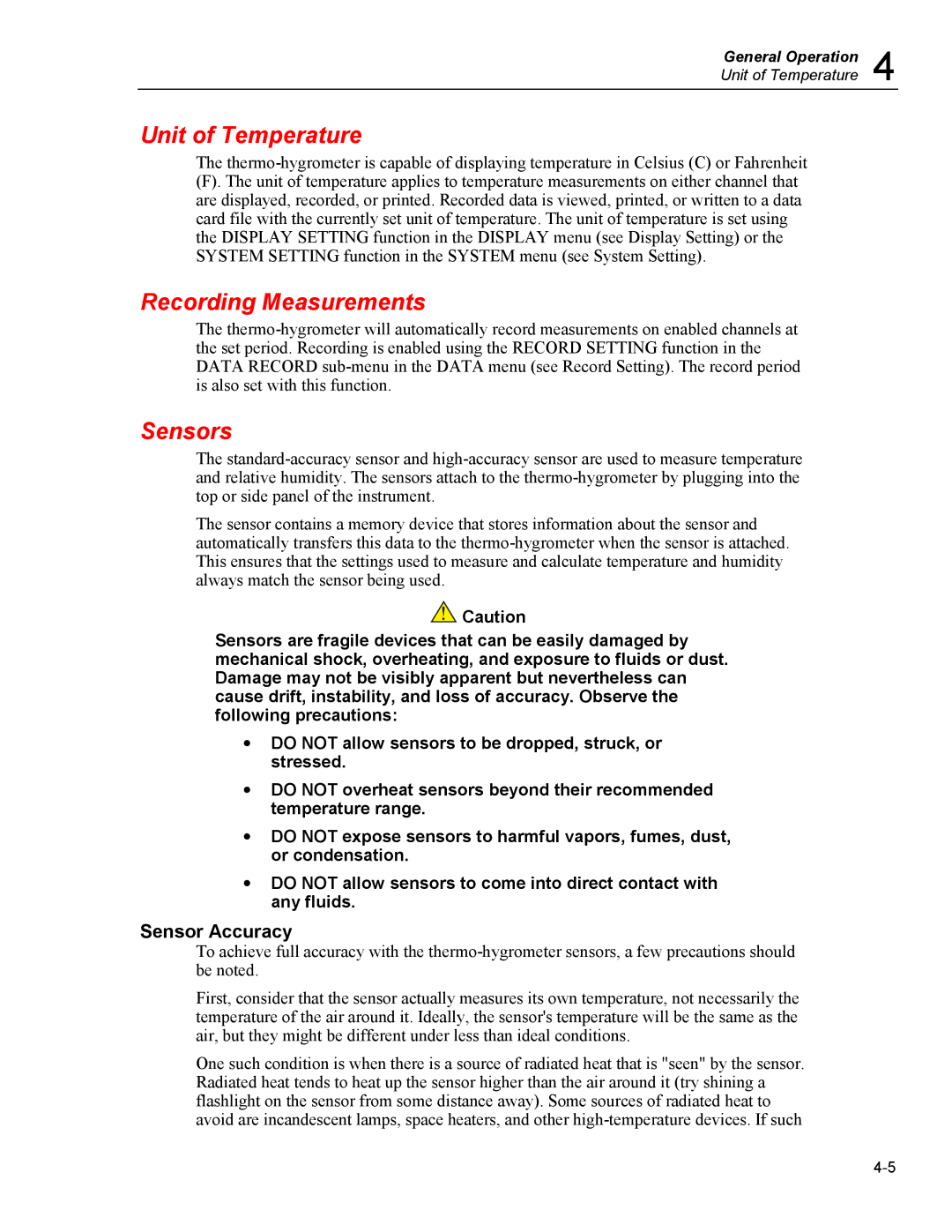General Operation 4
Unit of Temperature
Unit of Temperature
The
(F). The unit of temperature applies to temperature measurements on either channel that are displayed, recorded, or printed. Recorded data is viewed, printed, or written to a data card file with the currently set unit of temperature. The unit of temperature is set using the DISPLAY SETTING function in the DISPLAY menu (see Display Setting) or the SYSTEM SETTING function in the SYSTEM menu (see System Setting).
Recording Measurements
The
Sensors
The
The sensor contains a memory device that stores information about the sensor and automatically transfers this data to the
![]() Caution
Caution
Sensors are fragile devices that can be easily damaged by mechanical shock, overheating, and exposure to fluids or dust. Damage may not be visibly apparent but nevertheless can cause drift, instability, and loss of accuracy. Observe the following precautions:
•DO NOT allow sensors to be dropped, struck, or stressed.
•DO NOT overheat sensors beyond their recommended temperature range.
•DO NOT expose sensors to harmful vapors, fumes, dust, or condensation.
•DO NOT allow sensors to come into direct contact with any fluids.
Sensor Accuracy
To achieve full accuracy with the
First, consider that the sensor actually measures its own temperature, not necessarily the temperature of the air around it. Ideally, the sensor's temperature will be the same as the air, but they might be different under less than ideal conditions.
One such condition is when there is a source of radiated heat that is "seen" by the sensor. Radiated heat tends to heat up the sensor higher than the air around it (try shining a flashlight on the sensor from some distance away). Some sources of radiated heat to avoid are incandescent lamps, space heaters, and other
